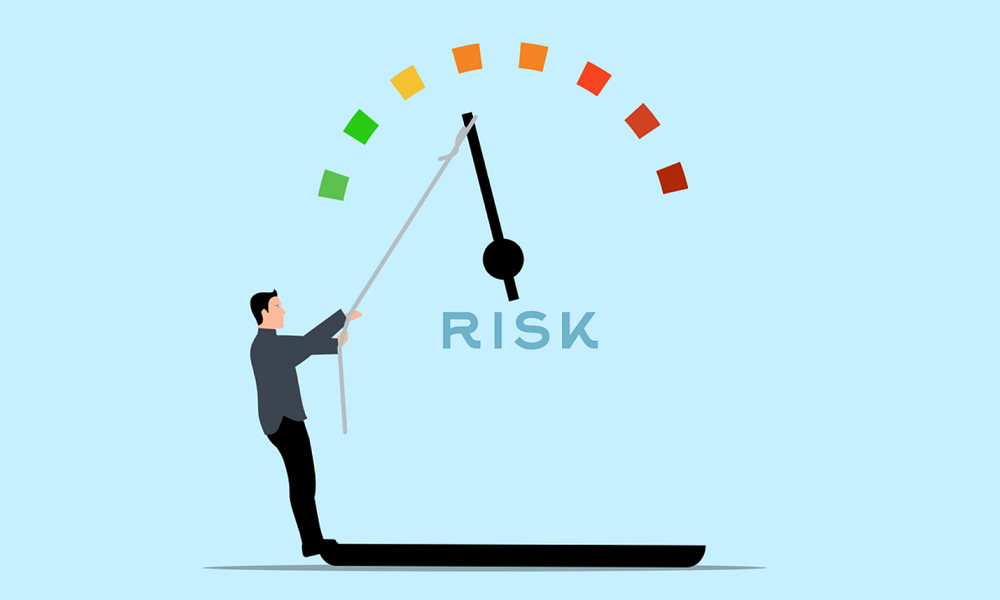Reviews
Top Tools and Technologies for Workplace Risk Detection and Management

Risk management is sacrosanct with any business strategy. It is essential because it focuses on helping companies identify and guard against potential problems. Goal attainment is dependent on risk mitigation. Potential loopholes, vulnerabilities, weaknesses, and errors must be detected and managed effectively.
Practical risk management techniques form the bedrock of secure business operations. The tech space is peppered with various methods and tools to assist in risk management. The workplace can gain invaluable insights into this arena by following sage advice.
Specifically, risk management tools and technologies include practices, software applications, and methods for identifying, prioritizing, and evaluating risks. Careful and methodical coordination of tools and resources is implemented to minimize the effects of risk. Each risk management tool showcases specific attributes, including analytical, financial, and risk assessment tools.
These are geared towards helping companies forecast potential risks and implement mitigation strategies. Ultimately, the strategic objectives are clear: Security, project success, and business health and wellness. Below are the top ten tools and technologies currently employed in workplace risk detection and management.
| Type of Tool/Technology | Description |
|---|---|
| Static and Dynamic Application Security Testing (SAST & DAST) | DAST vs SAST: Which is better? These complementary tools are indispensable for application security. SAST scans source code to find vulnerabilities early in the Software Development Lifecycle (SDLC). DAST, on the other hand, tests live applications by simulating real-world attack scenarios. SAST helps detect known vulnerabilities in the codebase. DAST identifies weaknesses in how the apps behave in a runtime environment. Combined, they deliver a comprehensive security framework. By integrating them into development workflows, organizations can identify more vulnerabilities. This leads to fixes and ensures apps are secure before deployment. |
| Risk Intelligence Platforms | AI-powered platforms that use advanced algos to predict and manage risks proactively. These tools allow businesses to identify and respond to emerging threats before they escalate. This offers strategic advantages with fewer vulnerabilities. |
| Disaster Recovery & Business Continuity | These essential solutions prepare organizations to recover quickly from disruptions. They focus on protecting critical assets. This ensures that operations can resume efficiently. Plus it minimizes the impact of unforeseen events on business continuity. |
| Project Management Software | Project management tools with built-in risk management capabilities provide seamless tracking of risks. They also offer project milestones, resource allocation, and deliverables. This software ensures that teams stay on top of project goals while limiting potential challenges. |
| Scenario Analysis Tools | These tools allow organizations to model hypothetical risks and their potential impacts. Businesses can plan effectively and improve resilience by analyzing multiple outcomes. As such, this ensures that businesses are prepared for unexpected challenges. |
| Risk Assessment Templates & Checklists | Here is a simple yet highly effective tool to guide organizations in systematically identifying and documenting risks. These tools provide a structured framework for understanding risk exposure across various departments and processes. It is an indispensable tool for risk management planning. |
| Compliance Risk Management Tools | These tools monitor legal and regulatory frameworks for ensuring business compliance. These tools help to identify compliance gaps, reduce liabilities, and guide corrective actions. |
| Cybersecurity Assessment Tools | With cybersecurity threats rising, these tools are designed to identify and address vulnerabilities in an organization’s IT infrastructure. They provide actionable insights to bolster digital defenses and protect sensitive data from cyberattacks. |
| Financial Risk Management Tools | These types of tools address financial vulnerabilities and mitigate different types of financial risks. Think of credit exposure, market fluctuations, and liquidity challenges. These tools provide strategic insights to help businesses navigate financial uncertainties with total confidence. |
It’s absolutely imperative to manage workplace risk as effectively as possible. A business cannot sustain and remain profitable if risk is handled in a haphazard manner. Various tools and technologies are readily available to help in this regard. For most among them are software code tools like Static Application Security Testing (SAST), and Dynamic Application Security Testing (DAST). Workplace risks span the full spectrum; this makes detection and mitigation all the more important.
IT security consultants will do well to Implement water type protocols to ensure early detection and resolution of cybersecurity breaches. Innovative strategies can easily be employed to nip the proverbial problems in the bud. This enhances resilience, and safeguards operations. The continual evolution of risks leads to the leveraging of advanced tools and resources designed to stop them dead in their tracks. Companies are strongly advised to embrace these top-tier tech technologies in the interest of regulatory compliance, security, and profitability.

-

 World1 week ago
World1 week agoEthiopian volcano erupts for first time in thousands of years
-

 Health2 days ago
Health2 days ago8 kittens die of H5N1 bird flu in the Netherlands
-

 Legal7 days ago
Legal7 days agoUtah Amber Alert: Jessika Francisco abducted by sex offender in Ogden
-

 US News6 days ago
US News6 days agoExplosion destroys home in Oakland, Maine; at least 1 injured
-

 Health7 days ago
Health7 days agoMexico’s September human bird flu case confirmed as H5N2
-

 Legal3 days ago
Legal3 days ago15 people shot, 4 killed, at birthday party in Stockton, California
-

 World1 week ago
World1 week agoWoman killed, man seriously injured in shark attack on Australia’s NSW coast
-

 US News2 days ago
US News2 days agoFire breaks out at Raleigh Convention Center in North Carolina




